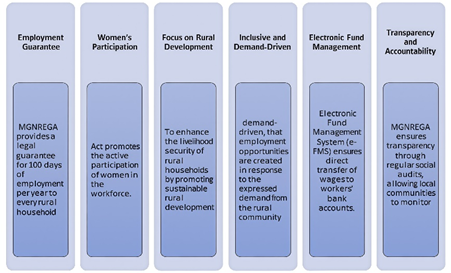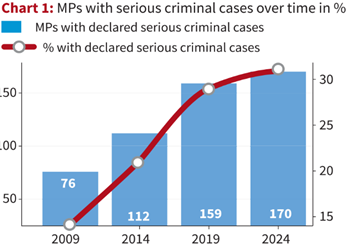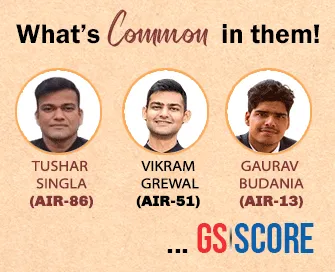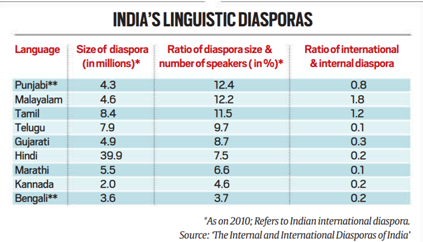

26th August 2025 (20 Topics)
Mains Issues
Context:
The Supreme Court has directed the Union Government to frame guidelines for regulating social media conduct, especially concerning commercialised free speech by influencers, after hearing a case involving insensitive jokes about persons with disabilities.
Balancing Free Speech with Social Responsibility
Judicial Observations on Free Speech
- Commercialisation of Free Speech: The Court noted that influencers and comedians often monetise speech, which cannot justify hurting sentiments of vulnerable groups.
- Varied Communities and Sensitivities: Justice Bagchi highlighted that humour must not breach sensibilities in a diverse society comprising women, children, minorities, senior citizens, and persons with disabilities.
- Consequences of Violation: Justice Kant emphasised that guidelines must provide clear, proportionate consequences for violations to prevent misuse of free speech.
Case-Specific Context
- Insensitive Remarks by Comedians: The case involved comedians, including Samay Raina, accused of making derogatory comments about persons with disabilities.
- Impact on Constitutional Objectives: Justice Kant underlined that such remarks undermine efforts to integrate disabled persons into mainstream society.
- Apology and Sensitisation: The Court directed comedians to issue an unconditional apology and suggested influencers should use their platforms to spread awareness.
Government and Legal Framework
- Centre’s Response: The Attorney-General stated that guidelines would primarily aim at sensitisation but also hold violators accountable.
- Categories of Speech: The Court referred to its jurisprudence distinguishing free speech, commercial speech, and prohibited speech, noting the overlap in this case.
- Regulatory Challenge: The Court clarified it is not curtailing free speech but ensuring a framework that distinguishes between free expression and harmful speech.
Significance of the Judgment:
- The Court recognises the growing influence of digital platforms and their capacity to shape public discourse.
- Commercialisation of free speech raises accountability concerns as speech becomes both content and commodity.
- The directive reinforces the constitutional value of dignity (Article 21) for all citizens, particularly marginalised groups.
Concerns Highlighted:
- Lack of regulatory clarity in distinguishing between free expression and harmful content.
- Risks of misuse of humour and satire leading to normalisation of discrimination.
- Possibility of guidelines being misinterpreted as censorship if not framed carefully.
Way Forward:
- Balanced Guidelines: Establish clear, transparent, and proportionate consequences while safeguarding free speech under Article 19(1)(a).
- Community Sensitisation: Mandatory awareness modules for influencers, comedians, and podcasters to ensure inclusivity in content.
- Collaborative Regulation: Government should involve civil society, digital platforms, and legal experts in drafting guidelines.
- Promoting Responsible Content Creation: Encourage influencers to act as ambassadors of inclusivity, thereby transforming apology into positive advocacy.


Mains Issues
Context:
The Government of India allocated ?86,000 crore for MGNREGA in FY 2025–26, the highest since the scheme’s inception.
Key Dimensions of MGNREGA
Objectives of the Scheme

- Employment Guarantee: Provides at least 100 days of wage employment per rural household annually for unskilled work.
- Asset Creation: Focuses on durable, productive assets such as irrigation canals, water bodies, and soil conservation measures.
- Social Inclusion: Targets SCs, STs, women-headed households, and other vulnerable groups.
- Decentralised Governance: Strengthens Panchayati Raj Institutions (PRIs) through bottom-up planning.
Performance and Achievements
- Budgetary Support: Allocation for FY 2025–26 stands at ?86,000 crore, compared to ?33,000 crore in FY 2013–14.
- Employment Generation: In FY 2024–25, 290.60 crore person-days were generated across 15.99 crore households.
- Women’s Participation: Women’s share rose from 48% in FY 2013–14 to 58.15% in FY 2024–25, demonstrating empowerment and inclusion.
- Technological Advancements: 99.94% wages now paid electronically; 6.36 crore assets geo-tagged; Aadhaar seeding covers 97% of active workers.
- Project UNNATI: Since 2019, aims to skill 2 lakh workers for sustainable livelihoods; by March 2025, 90,894 trained.
Reforms and Innovations
- Mission AmritSarovar: Over 68,000 water bodies rejuvenated against the target of 50,000.
- Digital Tools: NMMS app for attendance, JALDOOT app for groundwater monitoring, Yuktdhara portal for geospatial planning.
- Transparency Measures: Mandatory social audits, e-FMS payments, Aadhaar-linked job cards, and job card verification drive.
- Convergence Model: Collaboration with 13 Ministries (e.g., Anganwadi centres, GP buildings, border roads with BRO).
Challenges in Implementation
- Delayed Wage Payments: Despite improvements, occasional fund flow disruptions impact rural livelihoods.
- Demand-Supply Gap: At times, actual employment offered does not match rural demand during lean seasons.
- Corruption and Leakages: Fake job cards and ghost beneficiaries continue despite Aadhaar-linked verification.
- Asset Quality Concerns: Some assets lack durability or integration with larger development plans.
Way Forward
- Timely Fund Release: Strengthen fund transfer mechanisms to ensure uninterrupted wage payments.
- Skill Integration: Expand Project UNNATI and convergence with Skill India to ensure transition from unskilled to semi-skilled employment.
- Quality Assurance of Assets: Institute third-party monitoring to ensure durability and integration of assets with local development plans.
- Strengthen Social Audits: Empower community monitoring through greater capacity-building of Gram Sabhas.
- Green Growth Linkages: Align MGNREGA works with climate adaptation projects like afforestation, watershed management, and renewable energy-based rural infrastructure.
|
PYQ: "The emergence of MGNREGA has transformed the dynamics of rural labour markets in India. Critically evaluate its performance and suggest measures to improve its effectiveness." (2017) |


Prelims Articles
Context:
The Supreme Court Collegium headed by CJI B.R. Gavai has recommended the elevation of Justices Alok Aradhe and Vipul Manubhai Pancholi as judges of the Supreme Court.
Appointment of Supreme Court Judges:
Constitutional Provisions
- Article 124(2): Judges of the Supreme Court are appointed by the President after consultation with judges of the SC and HC as deemed necessary.
- Article 124(3): Qualifications for appointment:
- Must be a citizen of India.
- At least 5 years as a High Court judge (single or multiple HCs) OR
- At least 10 years as an advocate in High Court(s) OR
- Distinguished jurist.
|
Collegium System (Judicial Appointments)
Evolution (Judges Cases):
|
Composition and Strength
-
- Originally:1 CJI + 7 judges (Constitution, 1950).
- Increased gradually through amendments (21, 26, 30, etc.).
- Present sanctioned strength (as per The Supreme Court (Number of Judges) Amendment Act, 2019): 34 judges (1 CJI + 33 others).
Tenure, Resignation & Removal
- Tenure: Till age 65 years (Article 124).
- Resignation: To the President, any time before 65 years.
- Removal (Impeachment):
- By President on Parliament’s address.
- Requires Special Majority (Article 124(4)):
- Majority of total membership of the House, AND
- Not less than two-thirds of members present and voting.
- Grounds:Proved misbehaviour or incapacity.
- Procedure regulated by Judges (Inquiry) Act, 1968.
Salaries & Allowances
- Charged on Consolidated Fund of India (thus not subject to vote in Parliament ? ensures independence).
- Determined by Parliament through law.
- Privileges include allowances, pension, and housing.
Oath of Office
- Taken before the President or a person appointed by him.
- Commitment:
- To bear true faith and allegiance to the Constitution.
- To uphold sovereignty and integrity of India.
- To perform duties without fear, favour, affection, or ill-will.


Prelims Articles
Context:
The Supreme Court’s 2011 judgment banning SalwaJudum has resurfaced in political debate after allegations against Justice B. Sudershan Reddy, Opposition’s Vice-Presidential candidate.
Background of SalwaJudum
- SalwaJudum (“peace march” in Gondi) was a state-backed civilian militia movement launched in 2005 in Chhattisgarh to counter Maoist insurgency.
- It mobilised tribal youth, sometimes forcibly, into Special Police Officers (SPOs), also known as Koya Commandos.
- It was accused of serious human rights violations, including burning of villages, killings, and displacement.
- The movement was widely criticised by activists and human rights organisations.
Special Police Officers (SPOs)
- SPOs were appointed under the Chhattisgarh Police Act, 2007.
- They were armed civilians trained to fight Maoists, paid an honorarium of about ?3,000 per month.
- Recruitment included youth, often under 18 years old, lacking education and proper training.
Case Before the Supreme Court
- In Nandini Sundar vs. State of Chhattisgarh (2011), the legality of appointing SPOs and arming civilians to counter Maoists was challenged.
- Petitioners argued this violated Article 14 (Equality before Law) and Article 21 (Right to Life with Dignity).
Supreme Court Judgment (2011)
- Declared SalwaJudum illegal and unconstitutional.
- Held that the state cannot arm civilians and deploy them in counter-insurgency operations.
- SPOs were found to be inadequately trained, underage, and used as cannon fodder in Maoist areas.
- Directed the government to:
- Disband SPOs and SalwaJudum.
- Withdraw firearms issued to them.
- Refrain from using surrendered Maoists or civilian groups in combat roles.
- Deploy only properly trained police and paramilitary forces.
Significance of Judgment
- Reaffirmed constitutional supremacy over executive expediency.
- Stressed that rule of law cannot be sacrificed for short-term gains in counter-insurgency.
- Upheld the principle of protection of tribal rights and dignity under Articles 14 and 21.


Prelims Articles
Context:
Lok Sabha Speaker Shri Om Birla addressed the valedictory session of the Conference of Presiding Officers on the centenary year celebration of Shri Vitthalbhai Patel, highlighting concerns over declining dignity of legislative institutions.
Shri Vitthalbhai Patel’s Legacy:
- He was the first Indian to be elected President (Speaker) of the Central Legislative Assembly in 1925. He introduced reforms like creating an independent secretariat for the legislature, ensuring impartial functioning and free expression within the House. These principles later shaped constitutional provisions for Parliament’s independent secretariats (Article 98 for Lok Sabha & Rajya Sabha).
Parliamentary Privileges:
- Members of Parliament and State Legislatures enjoy freedom of speech under Article 105 (Parliament) and Article 194 (State Legislatures). However, these freedoms are subject to the discipline of rules, procedures, and conventions. The Speaker under Rules of Procedure has authority to maintain decorum and order.
Role of Presiding Officer:
- The Speaker ensures neutrality, impartiality, and orderly conduct of business. The Presiding Officer’s rulings are binding and considered final in matters of discipline. The Rulings of Speaker hold importance as parliamentary conventions.
Constitutional Safeguards:
- Article 122 & 212: Courts cannot question the validity of parliamentary or legislative proceedings on grounds of procedural irregularities.
- Separation of Powers: Legislature functions as a deliberative body and law-making authority.
Current Relevance:
- Concerns over disruptions, unparliamentary expressions, and weakening of conventions directly impact the credibility and effectiveness of democratic institutions. Maintaining decorum is essential to uphold parliamentary democracy, one of the basic features of the Constitution as recognized in Kesavananda Bharati (1973) case


Prelims Articles
Context:
31% of MPs and 29% of MLAs in India face serious criminal charges, reflecting a rising trend of criminalisation in politics.
Definition of Serious Criminal Charges
- Offences punishable with five years or more imprisonment or non-bailable offences are classified as serious criminal charges.
- Such cases include offences like murder, attempt to murder, kidnapping, and crimes against women.
Trend in Parliament
- In 2009, only 14% of MPs faced serious cases.
- By 2024, this figure rose to 31% of MPs, more than doubling in 15 years.
- Telangana had the highest share (71%) followed by Bihar (48%).
- Uttar Pradesh recorded the highest absolute number (34 MPs).

Trend in State Assemblies
- As of 2024, 29% of MLAs (over 1,200) had serious criminal charges.
- Andhra Pradesh topped the list (56%), followed by Telangana (50%).
- Uttar Pradesh had the highest absolute number with 154 MLAs (38%).
Party-Wise Distribution
- BJP: Highest absolute number — 63 MPs (26%) and 436 MLAs (26%).
- Congress: 32 MPs (32%) and 194 MLAs (30%).
- RJD: 100% of its 4 MPs and 62% of its MLAs had serious cases.
- TDP: 61% of its MLAs faced serious charges.
Constitutional and Judicial Perspective
- Article 102 & 191: Disqualification of MPs/MLAs upon conviction (not charges).
- Supreme Court Judgments:
- Association for Democratic Reforms (2002) – Mandatory disclosure of criminal records.
- Lily Thomas v. Union of India (2013) – Immediate disqualification upon conviction.
- Law Commission (244th Report, 2014): Recommended disqualification upon framing of charges for serious offences.
Implications for Democracy
- Undermines rule of law and weakens public trust in democratic institutions.
- Leads to criminal capture of politics, reducing governance efficiency and integrity.
- Urgent reforms needed: electoral disqualification at the stage of framing charges, strengthening fast-track courts, and public awareness through voter education.


Prelims Articles
Context:
The increasing constitutional challenges to Parliamentary laws and proposes strengthening legislative scrutiny by involving the Attorney-General (AG) in law-making processes.
Legislative Supremacy vs. Constitutionalism
- Indian Parliament has the power to make laws but no law can derogate from the Constitution.
- Unlike the British model of absolute parliamentary sovereignty, India follows the principle of constitutional supremacy.
Judicial Review of Legislation
- Judiciary has the power to strike down laws that are unconstitutional (Article 13).
- This power is meant to be used sparingly, but frequent challenges indicate flaws in legislative drafting and scrutiny.
- Example: Challenges to the Waqf (Amendment) Act, 2025 soon after enactment.
Reasons for Frequent Challenges
- Vague definitions and incoherent clauses.
- Cross-references and contradictions with existing laws.
- Provisions conflicting with constitutional mandates.
- Bypassing of Parliamentary committees and inadequate debates.
Illustrative Case
- Transgender Persons (Protection of Rights) Act, 2019 Bharatiya Nyaya Sanhita, 2023: disparity in punishment for sexual abuse of transgender persons vs. women — potential constitutional challenge.
Parliamentary Procedure in Theory vs. Practice
- Manual of Parliamentary Procedure (Chapter 9) provides clear steps: stakeholder consultation ? approval by Law Ministry ? Cabinet consideration ? three readings in Parliament ? committee scrutiny.
- In practice, Bills are rushed, committees are bypassed, and MPs often lack legal guidance.
Proposed Reform – Retainer Attorney-General
- Article 88 of the Constitution: AG has the right to participate in Parliamentary proceedings (though not to vote).
- Involving AG in legislative debates can help identify constitutional infirmities and legal inconsistencies before enactment.
- This would enhance quality of legislation, reduce judicial invalidations, and strengthen constitutional democracy.


Prelims Articles
Context:
The Promotion and Regulation of Online Gaming Act, 2025 was passed by Parliament to ban Real Money Games (RMGs) while promoting e-sports and social gaming.
Key Features of the Act
- Three categories of online games: e-sports, social gaming, and Real Money Games (RMGs).
- RMGs banned: includes poker, rummy, fantasy cricket, and similar games, irrespective of skill or chance.
- E-sportsrecognised under the National Sports Governance Act, 2025.
- Social gaming encouraged for educational and recreational purposes with budget allocation from the Consolidated Fund of India.
Regulation and Enforcement
- Offering Real Money Games(RMGs): Punishable with up to 3 years imprisonment or ?1 crore fine.
- Advertising RMGs: Punishable with up to 2 years imprisonment or ?50 lakh fine.
- Offences:Cognisable and non-bailable under the BharatiyaNagarik Suraksha Sanhita (BNSS), 2023.
- Enforcement:CERT-IN empowered to block apps, with possible involvement of Interpol for offshore platforms.
- Players: No penal action prescribed.
Concerns and Criticisms
- No distinction between games of skill and games of chance, which courts have previously recognised.
- Conflict with Article 19(1)(g) – Right to Trade and Occupation.
- Overlap of jurisdiction: Entries 34 and 62, State List (7th Schedule) grant States power to regulate betting and gambling.
- Loopholes: Possible bypass through VPNs and offshore operations.
Economic, Social and Security Dimensions
- Estimated ?15,000 crore losses annually due to Real Money Games(RMGs).
- WHO links RMGs to addiction, financial distress, and suicides (32 suicides in Karnataka in 31 months).
- Industry concerns: Ban may threaten 2 lakh jobs across 400+ companies.
- National security: Reports of terror funding, tax evasion (?30,000 crore GST fraud), money laundering, and use of cryptocurrency via gaming firms.
Judicial and Taxation Aspects
- SC rulings:Rummy and Fantasy Sports involve skill and are not pure gambling.
- 2023 GST reforms: Online gaming taxed at 28% GST similar to casinos and horse racing.
- Pending SC judgment: Classification of RMGs as gambling vs. skill-based activity, and validity of retrospective GST levy.


Prelims Articles
Context:
Prime Minister of Fiji, SitiveniRabuka, paid his first official visit to India where both nations reaffirmed their commitment to strengthen cooperation in defence, healthcare, climate action, and the Indo-Pacific region.
Historical and Cultural Ties
- Over 60,000 Indian indentured labourers (Girmitiyas) migrated to Fiji between 1879 and 1916, shaping its multicultural society.
- The 12th World Hindi Conference (2023, Nadi, Fiji) and the celebration of Girmit Day (2025) highlighted cultural bonding.
- India deputed a Hindi–Sanskrit teacher to the University of Fiji and supported participation of Fijian Pundits in the International Geeta Mahotsav (IGM 2025).
Strategic and Defence Cooperation
- MoU on Defence Cooperation signed in 2017, reaffirmed in 2025.
- Areas of cooperation: UN Peacekeeping, Military Medicine, White Shipping Information Exchange, Cyber Security, and Maritime Security.
- India to establish a Defence Wing in its High Commission (Suva) and gifted two ambulances to Fiji Military Forces.
- Planned Indian Naval Ship port call to Fiji.
Climate and Sustainable Development
- Fiji is a member of ISA, CDRI, and GBA.
- ISA STAR Centre to be set up at Fiji National University.
- Tubalevu Village Groundwater Project announced as Fiji’s first Quick Impact Project under India’s Pacific engagement.
- Both nations reaffirmed support for the Blue Pacific 2050 Strategy and India’s Mission LiFE.
Health and Education Cooperation
- MoU signed for a 100-bedded Super-Specialty Hospital in Suva, largest Indian aid project in the Pacific.
- Collaboration under e-Sanjeevani telemedicine, establishment of Jan AushadhiKendras, and supply of medicines by HLL Lifecare Ltd.
- MoU on Recognition of Indian Pharmacopoeia (2025) to enhance pharmaceutical cooperation.
Economic, Agriculture, and Connectivity
- Fiji granted market access to Indian ghee.
- India gifted 12 agricultural drones and 2 mobile soil testing laboratories to Fiji.
- MoU between NABARD and Fiji Development Bank for agricultural financing.
- India supports Fiji’s sugar sector with training programmes and technical experts.
Multilateral and Regional Engagements
- Fiji supports India’s bid for UNSC permanent membership and candidature for UNSC non-permanent seat (2028–29).
- Collaboration within FIPIC (Forum for India–Pacific Islands Cooperation) and Pacific Islands Forum (PIF).
- Fiji to join Indo-Pacific Oceans Initiative (IPOI) and supports the concept of “Ocean of Peace.”


Prelims Articles
Context:
India’s internal linguistic diasporas, highlighting their scale, cultural impact, and socio-economic significance, with reference to a recent study in Sociological Bulletin.
Definition and Scope of Diaspora
- The term diaspora generally refers to people living away from their homeland, either internally or internationally.
- In India, pravasi and videshi are used both for international migration and long-distance internal migration.
India’s International Diaspora
- Estimated at 20 million in 2001–02 and over 30 million at present.
- Over 2,000 studies exist on international diaspora, highlighting its significance for remittances, soft power, and cultural spread.
India’s Internal Diasporas
- Less studied but larger in scale — internal diaspora population is over 100 million.
- Linguistic groups with significant dispersion across India (2010 Census estimates):
- Punjabi diaspora:3 million (12.4% of speakers dispersed)
- Malayalam diaspora:6 million (12.2%)
- Tamil diaspora:4 million (11.5%)
- Telugu diaspora:9 million (9.7%)
- Gujarati diaspora:9 million (8.7%)
- Hindi diaspora:9 million (7.5%)

Key Observations
- Malayalam and Tamil have large internal diasporas but smaller international presence.
- Hindi diaspora is numerically largest but less dispersed compared to other groups.
- Internal diasporas often result from labour migrations, weaver/trader settlements, and business linkages.
- Diasporic identities are reinforced through cultural associations such as Durga Pujas, Ganapati festivals, and Samaj bodies.
Significance
- Internal diasporas shape urban demography, language retention, economic networks, and cultural spread.
- Migration patterns influence regional politics, integration challenges, and sub-national identities.
- Diasporas within India are crucial for understanding linguistic diversity, federalism, and migration history.


Prelims Articles
Context:
Recent PLFS 2023-24 data and Government reports highlight a significant surge in female workforce participation, entrepreneurship, and formal employment, marking a shift from women’s development to women-led development.
Female Workforce Participation:
- Women’s Workforce Participation Rate (WPR) rose from 22% (2017-18) to 3% (2023-24).
- Female Unemployment Rate (UR) declined from 6% to 3.2% during the same period.
- Rural India witnessed a 96% rise in female employment, while urban areas showed 43% growth.
Formal Employment and Social Security:
- 56 crore women joined the formal workforce in the past 7 years (EPFO payroll).
- 69 crore women registered on the e-Shram portal, gaining access to welfare schemes.
- Employability of female graduates increased from 42% (2013) to 53% (2024).

Women Entrepreneurship and Financial Inclusion:
- 429% rise in gender budgets in the last decade (?0.85 lakh crore in FY 2013-14 to ?4.49 lakh crore in FY 2025-26).
- Nearly 50% of DPIIT-registered startups have at least one woman director.
- 68% of MUDRA loans and 44% of PM SVANidhi beneficiaries are women.
- Women-led MSMEs nearly doubled from 1 crore (2010-11) to 92 crore (2023-24), generating 89 lakh additional jobs (FY 21–23).
Flagship Schemes Promoting Women Empowerment:
- Namo Drone Didi, Lakhpati Didi, and DAY-NRLM enhance rural entrepreneurship.
- Gender-focused initiatives under Startup India, Mudra Yojana, and SVANidhi strengthen financial self-reliance.
- Reflects paradigm shift towards AtmanirbharNari Shakti contributing to Viksit Bharat 2047.


Prelims Articles
Context:
Tourism has been highlighted as a resilient economic sector, capable of generating employment, boosting GDP, and insulating the economy from global trade shocks amid rising protectionism.
Tourism as an Economic Driver
- In 2024, tourism generated $28 billion (?2,45,000 crore) in foreign exchange for India.
- The sector accounts for around 7% of India’s GDP, with projections to reach 10% of global GDP share if nurtured effectively.
- It generates high employment intensity across diverse segments like hospitality, handicrafts, wellness, adventure, and medical tourism.
Resilience to Trade Shocks
- Unlike merchandise exports (steel, textiles, electronics), tourism is not vulnerable to tariffs, quotas, or trade wars.
- The sector provides a stable foreign exchange inflow, acting as a buffer against global economic fluctuations.
Union Budget Provisions (2024–25)
- Announced plan to develop 50 destinations as world-class tourist hubs.
- Emphasis on infrastructure development, branding, digitalisation, skill enhancement, and sustainability.
- Focus on shifting India’s positioning from a “place to see” to a “place to experience.”
Multiplier Effect
- Tourism stimulates growth in transport, handicrafts, agriculture, food services, and IT.
- It generates wide-ranging direct and indirect employment, especially in semi-urban and rural regions.
- It contributes to inclusive development, regional integration, and foreign exchange stability.
Strategic Importance
- Tourism strengthens India’s soft power by promoting cultural heritage and wellness.
- It aids in positioning India as a global tourism hub, aligned with sustainable development.
- Promotes Make in India and Vocal for Local initiatives through handicrafts, cuisine, and wellness products.


Prelims Articles
Context:
The Indian Navy is set to commission Project 17A stealth frigates INS Udaygiri and INS Himgiri at Visakhapatnam, marking the first-ever simultaneous commissioning of two frontline warships built at different shipyards.
Project 17A Background
- Project 17A is the follow-on to the Shivalik-class frigates (Project 17).
- Total 7 frigates are planned: 4 by Mazagon Dock Shipbuilders Ltd. (MDL), Mumbai, and 3 by Garden Reach Shipbuilders & Engineers (GRSE), Kolkata.
- Designed by the Warship Design Bureau (WDB) of the Indian Navy, showcasing indigenous warship design capability.
Key Features of Udaygiri and Himgiri
- Equipped with stealth technology for reduced radar cross-section.
- Propulsion: CODOG (Combined Diesel or Gas)
- Advanced weapons and sensors with ~75% indigenous content (involving MSMEs).
- Udaygiri: fastest delivery in its class due to modular construction techniques.
- Heritage revival: both names commemorate earlier Indian naval warships.

Strategic Significance
- Commissioning strengthens blue-water operational capabilities of the Indian Navy.
- Will join the Eastern Fleet to enhance reach in the Indian Ocean Region (IOR).
- Reflects Aatmanirbhar Bharat initiative and India’s growing indigenous shipbuilding ecosystem.


Prelims Articles
Context:
The Army War College, Madhya Pradesh, is hosting RAN SAMWAD-2025, India’s first Tri-service seminar on war, warfare, and warfighting, where Joint Doctrines and the Technology Perspective & Capability Roadmap will be released.
About RAN SAMWAD-2025:
- It is a sui generis Tri-service seminar organised by the Integrated Defence Staff (IDS) and Centre for Joint Warfare Studies (CENJOWS) with Army Training Command. It focuses on operational perspectives of serving officers, moving beyond academic discourse.
Themes Covered:
- Information Warfare, Grey Zone Threats, Integrated Operations, and Future Combat Technologies. It aims to promote strategic autonomy, inter-service synergy, and credible military discourse for India’s evolving security environment.
Doctrines and Roadmap:
- Release of new Joint Doctrines and the Technology Perspective & Capability Roadmap (TPCR)—the guiding document for indigenous defence capability development under the Ministry of Defence.
Institutional Background:
- Army War College, Mhow (Dr Ambedkar Nagar): India’s premier training institution for higher command and tactical doctrines.
- Chief of Defence Staff (CDS): Head of the Department of Military Affairs and Permanent Chairman of the Chiefs of Staff Committee (COSC), tasked with jointness in operations and procurement.
Long-Term Vision:
- Seminar to be held rotationally by Army, Navy, and Air Force. It aspires to evolve into a global security forum, showcasing India’s approach to modern warfare and military professionalism.


Prelims Articles
Context:
The 5th edition of Lok SamvardhanParv is being held in Kochi, Kerala from 26th August to 4th September 2025, showcasing art, craft, cuisine, and culture of minority communities.
About Lok SamvardhanParv:
- A flagship initiative of the Ministry of Minority Affairs.
- Aims to provide market linkages, national exposure, and empowerment to artisans, weavers, craftspersons, and culinary experts from minority communities.
- Promotes inclusive growth, cultural diversity, and self-reliance.
Cultural and Economic Significance:
- Brings together over 100 artisans and 15 culinary experts from across India.
- Showcases traditional crafts: Zari, Chikankari (UP), Phulkari (Punjab), Madhubani (Bihar), Blue Pottery (Rajasthan), Pashmina (Ladakh), Bastar Iron Craft (Chhattisgarh), Channapatna toys (Karnataka), and Nettippattam (Kerala).
- Promotes traditional cuisines, spices, pickles, bakery products, herbal preparations, and coastal delicacies.
Policy and Vision Alignment:
- Strengthens SabkaSaath, Sabka Vikas, Sabka Vishwas, SabkaPrayas.
- Encourages sustainable livelihood generation for minority communities.
- Promotes cultural exchange, communal harmony, and national integration.


Prelims Articles
Context:
The discovery of the giant snake fossil Vasuki indicus in Western India has highlighted the absence of a national fossil repository and legal safeguards against fossil theft, vandalism, and illegal trade.
Fossil Discoveries in India
- Recent find:Vasuki indicus, a 47-million-year-old giant snake fossil (length ~49 feet).
- India has a rich fossil record due to its geological history — separation from Gondwanaland (~150 million years ago) and later collision with Asia (~50–60 million years ago).
- Fossil record includes ancient plants, dinosaurs, early mammals, and even whale ancestors like Indohyus.
Challenges in Fossil Preservation
- India lacks a national fossil repository or legislation governing fossil protection.
- Fossils often face risks of vandalism, theft, illegal sales, or private hoarding.
- Examples: Dinosaur eggs stolen from Mandav museum (2013); fossils sold online and at international auctions.
- Private collections, though significant (e.g., Ranga Rao–Obergfell Trust), remain unsorted and vulnerable.
Global Context and Implications
- Fossils fetch massive sums in auctions — e.g., Stegosaurus fossil sold for $44.6 million at Sotheby’s (2024).
- UNESCO’s Convention on the Means of Prohibiting the Illicit Import, Export and Transfer of Ownership of Cultural Property (1970) seeks to prevent illegal trade in heritage objects.
- India’s fossil record is crucial for understanding evolution (dinosaurs, whales, early humans). Without safeguards, the country risks losing invaluable scientific and cultural heritage.


Prelims Articles
Context:
The World Food Programme (WFP) has warned of a worsening famine in Gaza, Sudan, and Myanmar, citing rising malnutrition and declining international funding.
World Food Programme (WFP)
- Established in 1961; headquarters: Rome, Italy.
- It is the food-assistance branch of the United Nations and the world’s largest humanitarian organization addressing hunger and promoting food security.
- Awarded the Nobel Peace Prize in 2020 for combating hunger and improving peace in conflict-affected areas.
Current Global Food Security Situation
- Gaza: Integrated Food Security Phase Classification (IPC) has officially declared famine in northern Gaza; about 1 million people require aid, but only 60–100 trucks/day are entering against a requirement of 600–700 trucks/day.
- Sudan: Around 25 million acutely food insecure, with 10 famine pockets confirmed—largest crisis since the Ethiopian famine of the 1980s.
- Myanmar: Approximately 10 million acutely food insecure due to ongoing political and economic instability.
- Global trend: Over the last five years, acutely food insecure population has tripled to around 320 million.
India and Food Security
- India has moved from being a recipient of WFP aid to a food surplus nation assisting others.
- However, India faces persistent challenges of malnutrition, undernutrition, and Global Hunger Index rankings.
- Government initiatives:National Food Security Act (2013), PM Poshan (Mid-Day Meal), Integrated Child Development Services (ICDS), and PoshanAbhiyaan.


Editorials
Context:
The summoning of senior journalists Karan Thapar and Siddharth Varadarajan by the Assam Police under Section 152 of the Bharatiya Nyaya Sanhita (BNS) has reignited debate over press freedom and sedition-like laws.
Section 152 of BNS — Sedition in Disguise
- Repackaged Sedition: Although sedition was formally removed from Indian law, Section 152 of the BNS criminalises acts “endangering sovereignty, unity, and integrity of India,” which critics describe as sedition in new clothing.
- Ambiguity in Interpretation: The provision equates radical speech with secession or rebellion, despite constitutional jurisprudence recognising that sovereignty and integrity refer only to threats of actual disintegration or armed rebellion.
- Excessive Punishment: The offence carries life imprisonment, making it disproportionate when applied to journalistic critique or dissent that does not amount to separatist activity.
Consequences of Police Summons
- Freezing Effect on Dissent: The summons create a chilling environment for journalists, as any criticism of government policy risks being misinterpreted as “strategic subversion” against national security.
- Financial and Personal Burden: Journalists face significant costs in litigation, travel, and compliance with repeated police summons, converting the legal process into punishment itself.
- Technological Alternatives Ignored: Despite available options like video-conferencing, police continue to insist on physical presence, amplifying harassment and inconvenience.
Accountability and Constitutional Safeguards
- Disregard of Judicial Mandates: The failure to provide a copy of the FIR violates the Supreme Court’s ruling in Youth Bar Association of India (2016) and subsequent High Court judgments.
- Weaponisation of Law: Recent cases against journalists such as Abhisar Sharma show how Section 152 is being used as a tool of intimidation rather than legitimate national security protection.
- Need for State Accountability: The absence of accountability for investigating agencies erodes trust in law enforcement and undermines constitutional protections for free speech.
Practice Question
Critically examine the implications of Section 152 of the Bharatiya Nyaya Sanhita on freedom of speech and expression in India. In your answer, discuss whether the provision amounts to a reintroduction of sedition in a new form.(250 words)


Editorials
Context:
Prime Minister Narendra Modi’s visit to Japancomes amid Tokyo’s pledge of a ¥10 trillion investment in India and evolving regional geopolitics.
Japan’s Expansive Investment and Technology Transfer
- Long-term Economic Commitment: Japan has pledged a ¥10 trillion (about $68 billion) investment over the next decade in India’s infrastructure, manufacturing, clean energy, and technology sectors.
- High-speed Rail and Innovation: Tokyo’s role in the Mumbai-Ahmedabad bullet train project through the E10 series Shinkansen demonstrates its willingness to transfer cutting-edge technology.
- Strategic Economic Security: The new Economic Security Initiative will strengthen cooperation in semiconductors, pharmaceuticals, critical minerals, and renewable energy, diversifying supply chains for India.
Strategic and Security Dimensions
- Revised Security Cooperation: India and Japan are set to revise their 2008 Joint Declaration on Security Cooperation to address new regional and global challenges.
- Indo-Pacific Stability: Both nations reaffirm commitment to a free, open, and rules-based Indo-Pacific through enhanced defence collaboration and digital partnerships, including AI and startups.
- Balancing with China: Modi’s visit to Beijing after Tokyo reflects India’s strategy of compartmentalising — pursuing deep ties with Japan while managing tensions with China through limited confidence-building measures.
The U.S. Factor and Strategic Balancing
- Erosion of U.S. Reliability: Trump 2.0’s unpredictability raises doubts over Washington’s role in sustaining the Quad, weakening its operational depth and consistency.
- Quad’s Strategic Challenges: The grouping’s effectiveness depends on U.S. commitment, and India, Japan, and Australia now face the task of sustaining its credibility without assured U.S. leadership.
- Japan as Anchor Partner: Amid wavering U.S. engagement and continuing mistrust with China, Japan emerges as India’s most consistent partner, offering stability, resources, and a shared democratic outlook.
Practice Question
“In the context of shifting Indo-Pacific geopolitics, critically analyse how Japan’s growing economic and strategic partnership with India serves as a stabilising factor amid U.S. unpredictability and persistent tensions with China.” (250 words)


Editorials
Context:
The Prime Minister’s Independence Day speechannounced upcoming reforms in the Goods and Services Tax (GST), reviving debate on creating a simplified, unified indirect tax system.
Challenges in the Current GST Structure
- Multiple Rate Slabs: GST currently operates with slabs of 5, 12, 18, and 28 per cent, along with cesses on luxury and sin goods, which increases compliance costs and complexity.
- Narrow Tax Base: A large share of revenue comes from the 18 per cent category, while the 12 per cent slab is under-utilised, leading to uneven revenue distribution.
- Cascading Effects: Inverted duty structures continue for several goods, where inputs are taxed higher than final products, raising compliance burdens and disputes.
Proposed Rationalisation Measures
- Merger of Slabs: Goods/services under the 12 per cent slab may be shifted to 5 per cent or 18 per cent, reducing the number of rates and simplifying classification.
- Standard Rate Expansion: Most goods and services should fall under the 18 per cent standard rate, broadening the base and ensuring revenue stability.
- Addressing Inverted Duty: Correcting anomalies where intermediate goods are taxed higher than outputs would reduce refund outflows and improve ease of business.
Long-Term Reforms and Implications
- GST 2.0 Vision: A move towards a dual-slab GST (merit rate and standard rate) would align India with international best practices like Canada and Australia.
- Revenue and Consumer Balance: Rationalisation of rates could lower the GST burden on small businesses and consumers while sustaining government revenue.
- Institutional Safeguards: Reforms must preserve fiscal autonomy of States and maintain cooperative federalism under the GST Council framework.
Practice Question
“Critically examine the need for GST rationalisation in India. Discuss how merging rate slabs and addressing inverted duty structures can strengthen revenue buoyancy while ensuring equity and simplicity in the indirect tax system.”



